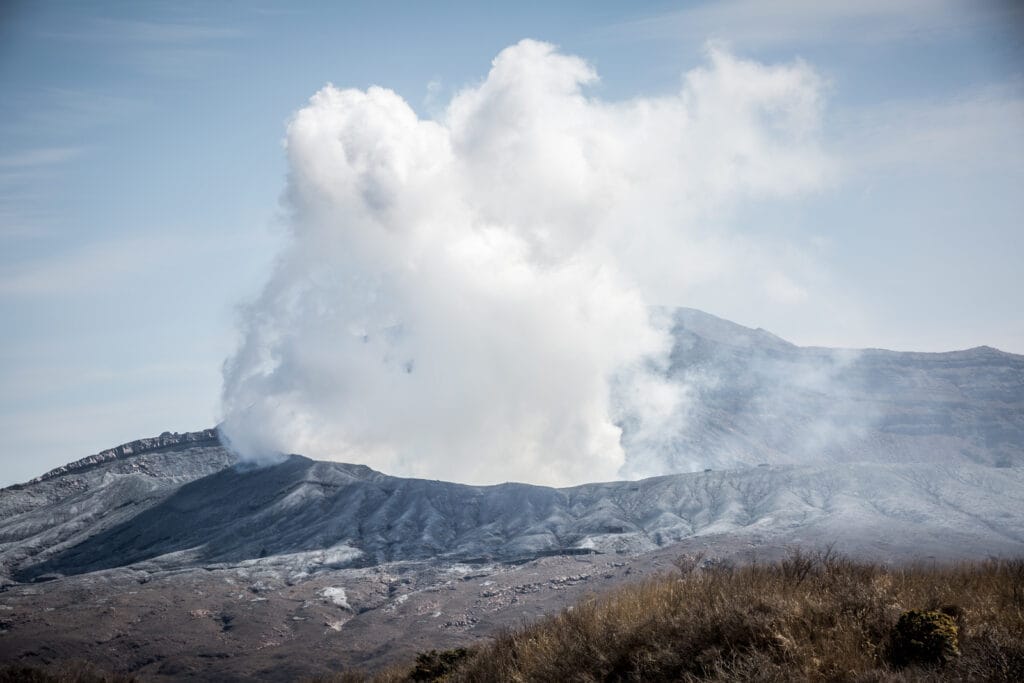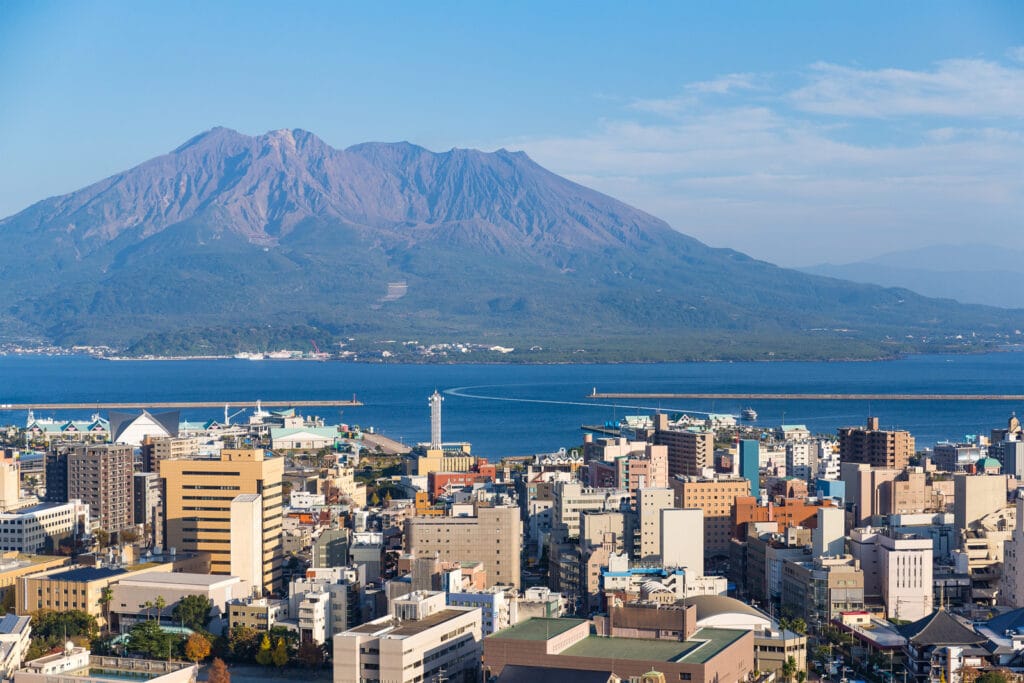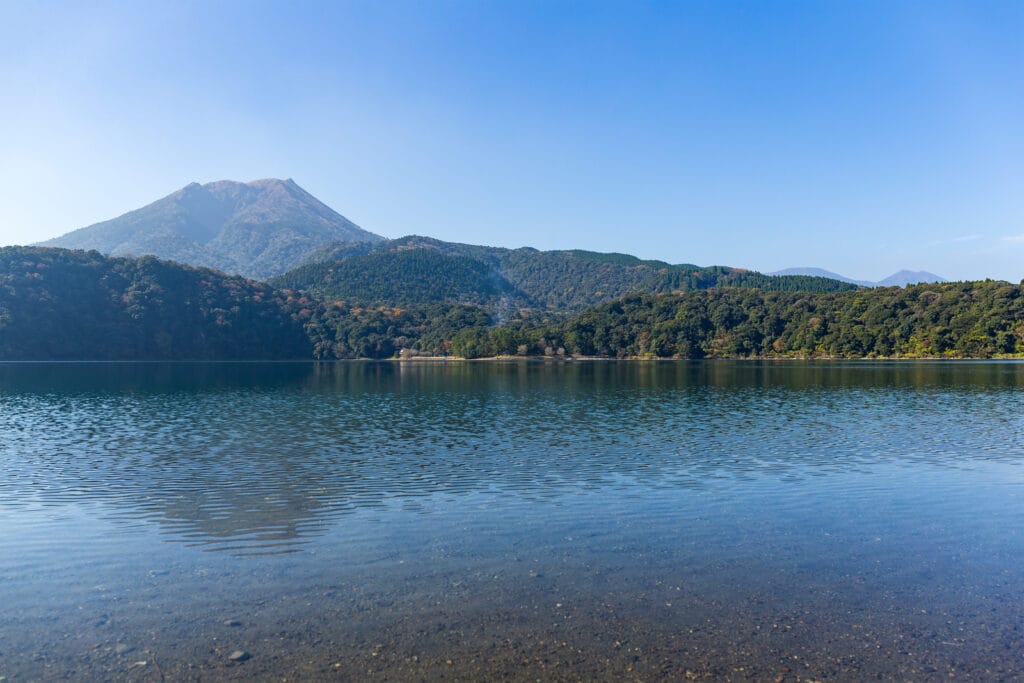I’d recommend three incredible volcano sites in Kyushu that’ll leave you awestruck. Mount Aso, Japan’s largest active volcano, features a massive caldera and lunar-like landscapes perfect for hiking adventures.
Sakurajima, near Kagoshima, puts on a daily volcanic show with up to 200 eruptions annually, while its slopes produce amazingly sweet crops in volcanic soil.
The Kirishima range, steeped in Japanese mythology, offers both steaming craters and sacred shrines across its network of 20 volcanoes.
These geological giants aren’t just scenic spots – they’re windows into Earth’s raw power, and there’s so much more to their stories.
1) The Giant: Mount Aso

Located in Kumamoto Prefecture’s Aso Kujū National Park, Mount Aso stands as Japan’s largest active volcano and one of the world’s most impressive volcanic sites.
While the Chugoku region offers its own unique attractions, Mount Aso’s grandeur remains unmatched in Japan’s volcanic landscape.
The area offers some of Japan’s most scenic hiking trails through its volcanic terrain.
I’m always struck by its massive caldera, which stretches 25 kilometers north to south and 18 kilometers east to west, creating a breathtaking lunar-like landscape crowned by five distinct peaks.
If you’re planning to visit, I’d recommend making Mt. Naka’s smoking crater your first stop, though you’ll want to check current conditions as this temperamental giant occasionally requires closures due to its frequent eruptions.
You can reach the crater area by bus or car, but don’t forget to pack sturdy shoes for the volcanic terrain.
For a gentler experience, I suggest exploring the Kusasenri plain, where you can even go horseback riding against the backdrop of this geological marvel.
2) Sakurajima’s Smoking Peak

While Mount Aso dominates central Kyushu, the southern city of Kagoshima lives in the shadow of its own volcanic guardian – Sakurajima.
You’ll find this smoking giant putting on quite a show, with spectacular eruptions occurring up to 200 times annually.
What was once an island has been connected to mainland Kyushu since its massive 1914 eruption, making it easily accessible for visitors today.
Trip budget planning helps ensure you can fully experience this iconic landmark without financial worries.
For optimal viewing conditions, plan your visit during autumn months when clear skies and pleasant temperatures prevail.
| Feature | Impact | Experience |
|---|---|---|
| Daily Eruptions | Ash clouds & rumbles | Witness nature’s power |
| Fertile Soil | Rich agriculture | Sample local tea & rice |
| Monitoring Systems | Early warnings | Safe viewing areas |
I’d recommend timing your visit for late afternoon when the setting sun illuminates the billowing ash plumes, creating an otherworldly spectacle that’ll leave you breathless – though keep that ash mask handy!
3) Kirishima’s Sacred Volcanic Range

Rising majestically across Kagoshima and Miyazaki Prefectures, the Kirishima volcanic range stands as one of Japan’s most spiritually significant natural wonders.
You’ll discover approximately 20 volcanoes here, including the towering Mt. Karakuni, where steam still billows from ancient craters into the crisp mountain air.
I’ll tell you what makes Kirishima truly special – it’s where Japanese mythology comes alive. The god Ninigi no Mikoto supposedly descended here, making this the ancestral ground of Japan’s imperial line.
You can pay your respects at Kirishima Jingu Shrine or trek along the ridge trail, where you’ll find everything from gentle paths to challenging ascents.
Don’t miss the healing hot springs or the chance to practice forest bathing beneath an 800-year-old sacred cedar.
The local train network provides convenient access to major volcanic sites throughout the Kirishima region.
Discerning travelers can enhance their experience with luxury ryokan stays that offer private onsen baths overlooking the volcanic landscape.
Last Word
Standing before Kyushu’s volcanic giants, I’m struck by how they embody both destruction and creation – these geological titans have shaped not just the land, but the very soul of the region.
While you’ll witness Sakurajima’s dramatic eruptions and Mount Aso’s vast caldera, you’re really experiencing something deeper: the raw power that’s forged Japan’s southern identity.
Don’t just observe these volcanoes; let them remind you how nature’s fury creates profound beauty.




